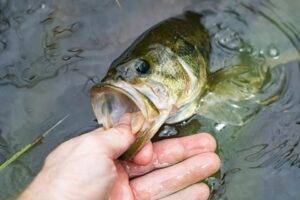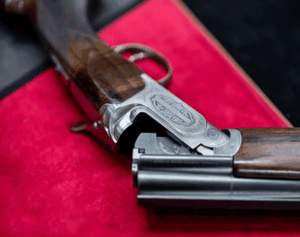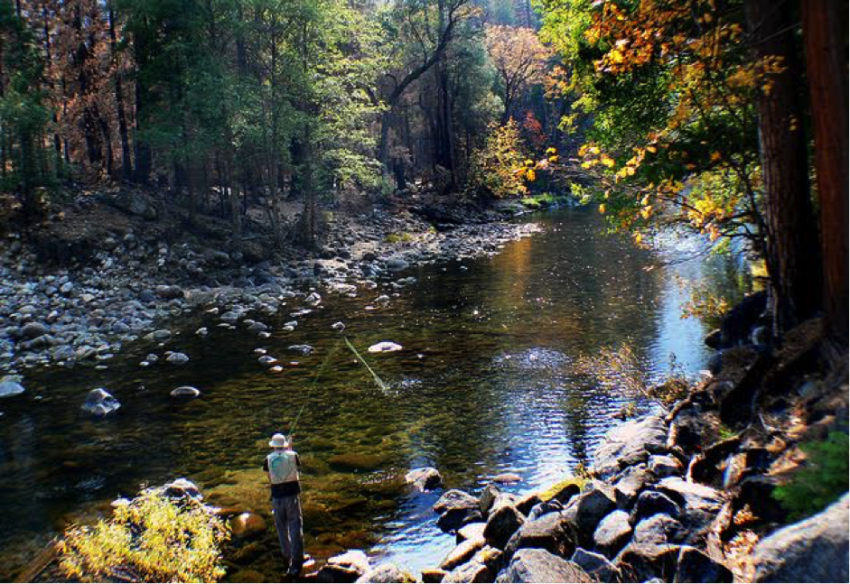
How to locate freshwater fish
Article Written By; John Lewis
Many anglers always feel the want to fish anywhere and anytime even if it is not needed and time does not allow us to. When we do want to fish, we love discovering new places to explore. It is all part of the thrill.
To begin locating your fish, and in this case I will be focusing on trout, there are 3 main principles to know but generally, this can apply to other freshwater fishes as well depending on their species.
- Food: Logically, food must always be in abundance and near to where the fish stays because they want to conserve energy in finding food and this applies to trout as they do not often stray far from their source of food.
- Shelter: Again, shelter must be in close proximity to their food source that can also help to protect them from predators. For the trout, they prefer being near the current. They choose places with objects like rocks to hide and rest behind or any other places where they can sit such as structures that protects them from the current or trees and bushes.
- Environment: Of course, the water temperature, oxygen levels, current and etcetera solely depends on each species. For the trout, they prefer swimming near the currents as the water there is much more oxygenated and they need to breathe. Avoid areas with still, stagnant water as trouts generally avoid them.
In this post, I will be writing on how to locate trouts in streams according to regions in rivers.

#1 Fish at the Riffles
A riffle is an area where it is commonly around or over rocks and it is shallow which forms a distinct disturbance and ripples on the water. To look for one, keep an eye out for whitewater that cascades over rocks into a deeper region of the water. Riffles on huge rivers can turn into rapids. A riffle is just what a trout needs as the region of water there is shallow with is perfectly oxygenated for them to feed. With an abundance of rocks and boulders, trouts can find perfect hiding and resting areas for themselves. All of these factors are ideal to search for them.
#2 Runs or Glides
Run is also known as a glide. It is kind of like an in-between area of deeper water directly below the riffle and the current there is always uniform as it flows into pools. It is usually around 1 to 2 meters in depth along with a few meters in width. Trouts love looking for shelters here and it is also easier for them to find for food. They lie at the bottom eating little crawling critters that are flowed out of the riffle. To look for runs, observe the water surface as it is always calmer than the turbulence in the riffle.
#3 Pools are Perfect as Shelters
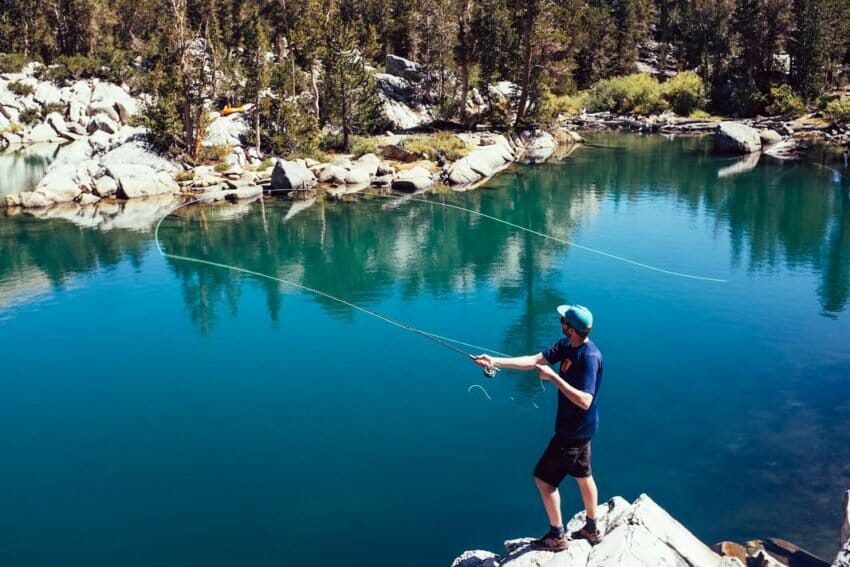
The pools are the deepest region of any sections of the river with the slowest moving current. Most anglers love fishing for trouts here as they are calm while ignoring the waters in between. A lot of the lakes are just big pools for further understanding and how to look for them. Fish will often withdraw to the pools on sunny days when the temperature is high or if they feel like they are in danger of predators. Huge river trouts often spend most of their day in the pool when they are the least active but for shallow rivers; pools are the area where it can only hold fish.
#4 Undercut Banks Provide Easy Meals
The undercuts usually occur in rivers that run through not the rocks but the soil instead. Meadow rivers and spring creeks are the sports to search for when you want to look for undercut banks. Undercuts are the ideal hiding and resting area in the river as they are sheltered by an overhang and currents are slowed down by roots and rocks. Trouts are able to protect themselves from unfriendly predators and the bright sun. Brownies especially love hanging out here to start their feeding during nightfall.
Tip: What most anglers do not realise is that they will usually walk aright above this bank which means you are actually above the fish which causes you to spook them and in turn spook other fishes within their vicinity. To prevent this, stay back from the bank or just walk and wade slowly into the water to fish them.
#5 Intersecting Currents is a Trout’s Favourite
When two or more bodies of flowing water come together in a river or a stream, fish will be able to find for more food because everyone knows that flowing water will always carry something. And most of the time, that something will be food for the fishes. When the currents meet, they will slow down at the intersection area and the food will be channelled specifically into one area. This area not only provides an abundance of food but also acts as a perfect shelter for trouts which makes these intersecting currents an ideal place for anglers to catch trouts. To look for these currents, keep an eye out for bubble trails flowing downstream or areas where you can notice an obvious change in the current speed.
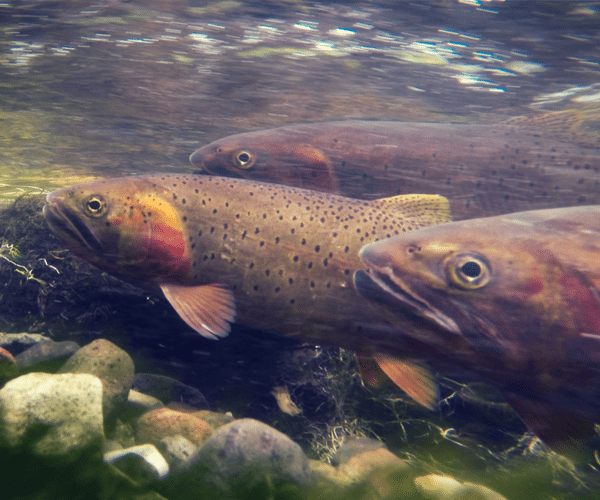
#6 Big Trouts Love Overheads
Overheads are usually close to the shore and can take various forms such as branches, foam, weed beds and docks. These locations offer protection from not only the sun and predators but they also provide relief and cover from strong currents that may harm them and also as a source of food. It is also an ideal place for larger trouts as it allows them to have an easy access to deeper waters for shelter. Land bugs usually inhabit these areas so when they are washed into the water, trouts are able to easily feed on them.
#7 Eddies Provide Easy Meals
Eddy is an area of the river where fast moving currents flow into an eddy as it slows down and forms a whirlpool. Structures like a log, large boulders or an indent in the banks will block the current flow which in turn will affect the direction of the current. Trouts are head over heels for eddies because insects are trapped by the currents as they drift down the water and they often feed there. Keep an eye out for foams on the surface along with the whirlpool.
#8 Use a fish finder
This is a pretty great technique to find almost any kind of fish. Basically, a fish finder uses ultrasonic wave technology to locate fish. The general concept is that ultrasonic wave will be emitted from the fish finder and once it hits a fish, the wave will be reflected and data is collected.
In the past, fish finders are used just to locate where the majority of fish are. These days, they are pretty well-built. The diagram illustrated on the screen are quite detail in which you get to determine what type of fish it is and the distance they are from you (also depends on the specs of fish finders).
There are a few great models out there or you can check out my personal fish finder buying guide. In case you are short of time, here are some specifications you want to look at before choosing your fish finder. They are transducer size and clarity (for better and clearer diagrams), GPS (so you get a clear direction guide) and setup difficulty (depends on your preference).
Conclusion
I hope this post will be able to help you in hooking up more fishes the next time you fish. Please comment below if you have any other fish location techniques or tips. Happy fishing!
 Author Bio: John Lewis, an avid outdoorsman that has a strong passion in fishing. He blogs about his experience and tips over at http://epicwilderness.com/
Author Bio: John Lewis, an avid outdoorsman that has a strong passion in fishing. He blogs about his experience and tips over at http://epicwilderness.com/


